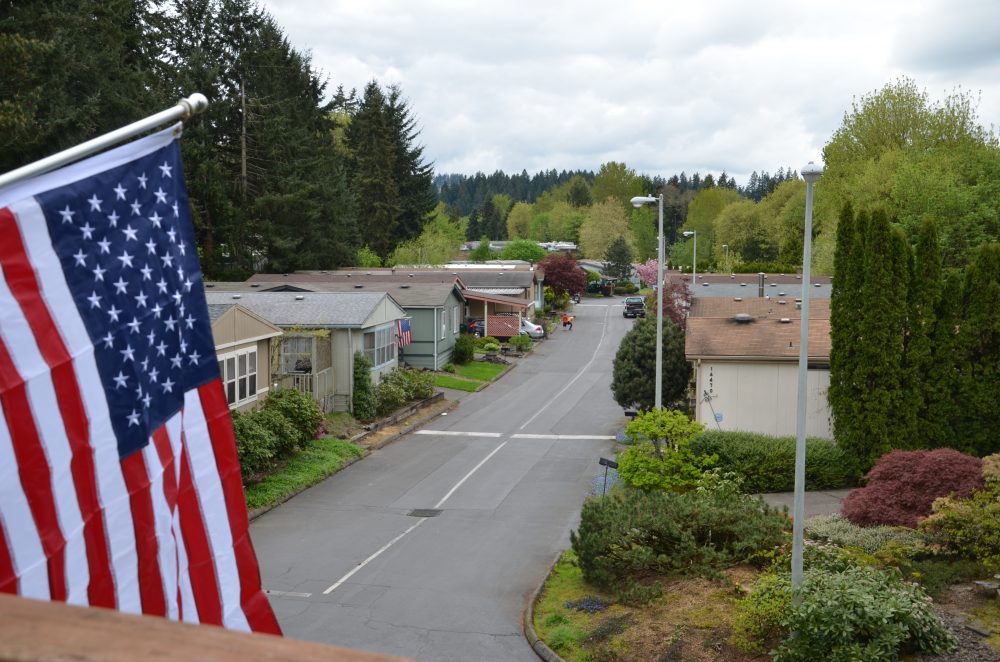
Detroit adopted an inclusionary policy that applies only to projects that receive discounted land from the city, or at least $500,000 in public subsidies. Photo courtesy of Grounded Solutions Network
Inclusionary housing programs—policies that tap the economic gains from rising real estate values to create affordable housing for lower-income families—have traditionally been a lot more popular in places with high land values and housing costs. In booming cities like San Francisco, New York, and Seattle, where housing development is profitable, the added cost of an inclusionary housing program that requires developers to sell or rent a certain percentage of new units at below market-rate prices can be fairly easily borne.
But in softer markets, where land values, rents, and sales prices are lower, and profit margins are thinner, inclusionary housing programs are more of a challenge. No city wants to impose requirements that the market can’t bear.
So does that mean cities like St. Louis and Detroit, which are struggling to rebound from decades of abandonment and disinvestment, or places like Atlanta and Philadelphia, where downtowns are seeing growth but areas away from the core are not, should not implement inclusionary housing?
Why Implement Inclusionary Policies in Soft or Mixed Markets?
Inclusionary housing policies are not a panacea for solving the affordable housing crisis—in strong, mixed, or soft housing markets. Communities need a full ecosystem of housing policies to address housing affordability challenges. And it’s possible that in the softest housing markets, other tools might be better first choices given the limited capacity of public agencies.
However, it is entirely appropriate for a soft- or mixed-market city to adopt an inclusionary housing policy before the market heats up. There are several significant downsides to waiting to develop an inclusionary housing policy until the market is hot:
- There is a five- to seven-year delay from the time an inclusionary housing policy is considered to the time the inclusionary units are actually built and occupied. It usually takes a year or two to do the needed studies and build political will for adoption of an ordinance. Once an inclusionary ordinance is passed, developers who already have their plans approved by the planning department will likely be grandfathered in and not required to comply. Then the development timeline from planning approvals to units on the ground can be another three to five years. By waiting until the market is hot to initiate a policy, communities lose the opportunity to build in affordability during development boom times.
- By the time the market is hot, land values have also gone up, which means it will be more challenging to get landowners to accept a moderate price for their parcel.
- In hot markets, cities may already be seeing rent escalation to the point that there is displacement of lower-income residents long before an inclusionary housing policy is put in place.
So there is real benefit to baking in affordability with inclusionary housing policies early.
Options For Crafting a Policy
There are several ways to craft an effective inclusionary housing program early in the market cycle, or in mixed markets where one neighborhood varies dramatically in rent levels from the next.
1. Offset the costs in places where the market isn’t there yet
Some communities provide significant financial incentives to developers of projects in softer-market areas to help offset the cost of inclusionary housing requirements. Detroit’s recently adopted inclusionary policy applies only to projects that receive discounted land from the city or at least $500,000 in public subsidies. Rick Jacobus, a consultant who works on inclusionary housing programs across the country and is a Shelterforce contributor, says, “In truly distressed markets, cities often provide tax breaks and other valuable incentives to encourage market-rate development. As a market heats up, it becomes possible for the public to start expecting something more in exchange for this investment. Incentives make it possible to require a higher share of affordable units than would otherwise be feasible. And it may be easier to phase out incentives later than it would be to increase inclusionary requirements.”
Alan Mallach, senior fellow at the Center for Community Progress and the National Housing Institute, which publishes Shelterforce, agrees: “Communities should really see what kinds of inducements or incentives they can give” to make inclusionary requirements more economically feasible.
While offsets can be very effective, the obvious downside is that this type of subsidy comes at a real cost to the public sector. This approach works best when affordability requirements are tied to incentives, which are currently provided to developers but are likely higher than what’s actually needed to make development feasible. This situation arises when the market has improved somewhat since the incentives were originally put in place (as is the case in Detroit).
2. Vary requirements by geography
One option is to vary the affordable housing requirements so they are higher in parts of town where the market is stronger. The mixed-income housing development program in Charlotte, North Carolina, applies only to census block groups where median home values are at or above the area median according to five-year census estimates. Similarly, the affordable housing impact fee in Oakland, California, divides the city into three geographic zones with different housing market characteristics (prices and rent) and different economic feasibility levels, and charges different fees in each zone, with the highest fees in downtown and nearby areas.
Another option is to implement a geographically constrained mandatory program in the high-cost parts of town, with a voluntary program elsewhere. The Smart Housing Mix Ordinance study prepared for the City of New Orleans (full disclosure: Grounded Solutions Network, where I am the state and local policy manager, contributed to this study) proposes a mandatory set-aside of 12 percent affordable units in centrally located areas and neighborhoods with good access to transit, with a voluntary program—where developers would be eligible for incentives in exchange for providing affordable homes—in the remainder of the city.
One downside to varying requirements by geography is deciding when and how to update either the geographies or the requirements. If you wait too long to include an area where the market is rising, you’ll miss out on the boom and on an opportunity to create more affordable homes. However, if you include new areas too soon, that could stifle nascent growth. Varied programs are also more challenging to administer.
3. Use a low percentage set-aside
A program with modest affordability requirements will have less impact on the project economics than a larger set-aside. Chicago’s Affordable Requirements Ordinance requires only 10 percent of homes in new developments to be affordable, as opposed to the 15 to 20 percent set-asides that are common in stronger-market cities.
Like Detroit’s new inclusionary ordinance, Chicago’s program also only applies to projects that receive city financial assistance or involve city-owned land. And in 2015, Chicago amended its ordinance to increase in lieu fees for downtown and higher-income zones and reduce fees for low-moderate income zones. In 2017, the city increased the affordable housing requirement in two pilot areas where the housing market is particularly strong.
Chicago is a great example of how an inclusionary housing policy can evolve over time as market conditions change.
4. Phase in requirements over time
In communities—or neighborhoods within communities—where the market is less strong, a fourth option is to delay implementation of inclusionary housing requirements and/or phase them in over time. For example, San Luis Obispo County, California, adopted a 20 percent inclusionary housing requirement in 2010 but the requirement was phased in over five years. In the first year of operation, the inclusionary set-aside was only 4 percent. Then the set-aside increased by an additional 4 percent each year, rising to 20 percent by year five.
San Jose, California, while currently one of the hottest housing markets in the country, was struggling on the heels of the great recession. San Jose adopted its inclusionary housing ordinance in early 2010 but delayed implementation until 2013. San Jose also added a creative market-based trigger to allow for earlier implementation if the housing market picked up more quickly than expected: the ordinance could go into effect if at least 2,500 building permits were issued within a 12-month consecutive period, with some additional caveats.
“If you set a schedule,” says Jacobus, “everyone’s on notice and land prices can adjust accordingly. And if the market isn’t picking up as quickly as anticipated, you always have the option to delay implementation further. But if you just wait to adopt an ordinance once the market heats up, you will never get the timing right.”
In an ideal world, municipalities might set—and adjust—inclusionary requirements based on an economic index of market health. But such a process would be extremely labor intensive. San Francisco considered this approach but ultimately deemed it too difficult.
More Tips
Some best practices that are relevant for inclusionary housing policies in any housing market are even more essential in softer or mixed markets.
1. Maximize flexibility and ease for developers by allowing compliance alternatives, specifically an in-lieu fee option
Providing for multiple compliance alternatives, such as off-site production or fees that are paid in-lieu of producing units, is generally seen as a best practice for inclusionary policies, but “when you’re working in a mixed-market environment, the in-lieu fee really does become important,” says Mallach. There’s still a heightened level of insecurity in mixed-market communities, and the complications of implementing on-site requirements might make a developer decide to go elsewhere. “Don’t underestimate the importance of what I’ll call the hassle factor,” adds Mallach. “There’s zero hassle factor in fees.”There are pros and cons to using in-lieu fees in any market.
One risk is that fee revenue may be used to build affordable homes in less-expensive parts of town, rather than in the hot market neighborhoods where it can be hardest to build affordable housing. Jurisdictions can address this concern by adopting a policy that places limits on or sets criteria for where in-lieu fees can be used to ensure that at least some units are built in high-opportunity areas.
2. Conduct an economic feasibility study
When considering whether to adopt or revise an inclusionary housing policy, local government agencies often retain an economic consultant to prepare a feasibility study. This study evaluates the economic trade-offs of requiring a certain percentage of affordable units in new residential or mixed-use projects.
Feasibility studies help policymakers ensure that new policies and programs are economically sound and will not deter development, while still delivering the types of new affordable units needed by the local community. Such studies are highly advisable in any market situation, but even more essential in softer or mixed-market environments, where land values are lower, rents and sales prices are lower, and profit margins are thinner, providing less “wiggle room” for inclusionary requirements.
Jacobus says “Feasibility studies can never look at every type of project and they are out of date the minute the ink is dry, but they are still the best way to reality check potential policy approaches and avoid big mistakes.”
The feasibility study should include the preparation of hypothetical development prototypes or pro formas to test the feasibility of inclusionary housing policies under varying market conditions and development scenarios (e.g. different assumptions for future projections of items such as construction costs and rents). This is particularly important if a jurisdiction is considering a geographically varied policy, or considering phasing in requirements over time as the market shifts.
While inclusionary requirements may not be feasible under current market conditions, they may become feasible if rents rise by a certain amount. More valuable than an economic feasibility study that simply says “inclusionary housing won’t pencil” is one that says “inclusionary housing will be feasible under the following market conditions” and projects when those market conditions will come to pass. This way, the jurisdiction can adopt a policy and monitor to ensure those projections are met. If the market doesn’t change as projected, the jurisdiction can delay implementation.
3. Build in periodic review of the policy
As market conditions shift, it may make sense to update the policy to respond to current conditions (as Chicago did). Every three to five years, the city should review the policy in light of changes in the housing market and determine whether key elements—such as the percent set-aside of affordable units, geographical boundaries, or the ratio of on-site requirements to in-lieu fees allowed—should be modified. This is particularly essential for policies that vary by geography.
4. Tie affordability requirements to upzoning
If a city is considering changing its zoning to allow for increased density in one or more neighborhoods, it’s likely that those neighborhoods have enough market demand to support an inclusionary requirement. Upzoning creates valuable new development potential that can lead to higher profits. Including affordability requirements along with upzoning allows the government agency to ”capture” some of the value provided to developers by the increased density for the provision of affordable housing. In these cases, it’s essential to “bake in” affordability requirements at the moment of upzoning so land costs don’t immediately rise to “eat up” the value of the new development potential.
There’s a great Dr. Seuss poem, Too Many Daves, which tells the story of Mrs. McCave who had 23 sons and named them all Dave. Mrs. McCave often wishes she had given her sons different names when they were born. “But she didn’t do it,” the poem reads, “And now it’s too late.” I know so many housing leaders from cities where the housing market experienced a huge jump who bemoan that they didn’t put in place an inclusionary housing policy early on, before the spike in prices. But they didn’t do it, and now it’s too late—housing is unaffordable and gentrification and displacement are prevalent. Soft- and mixed-market communities, don’t be like Mrs. McCave: put your inclusionary housing policy in place now, before it’s too late.




Comments